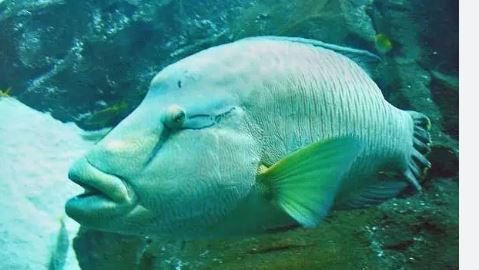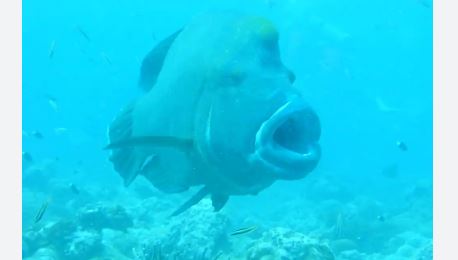
Big lips in the animal kingdom are far more than a quirky trait—they’re evolutionary marvels that serve critical functions like feeding, communication, and survival. From the ocean depths to sprawling savannas, animals with prominent lips showcase nature’s creativity in adapting to diverse environments. Whether it’s grasping tough vegetation, attracting mates, or crushing prey, these large-lipped creatures are both fascinating and vital to their ecosystems.
Animals with prominent lips captivate with their bold, functional features, found across diverse habitats from lush rainforests to vibrant coral reefs. These creatures, spanning mammals, fish, and primates, have evolved large lips to meet specific survival needs. Their appearance often draws attention, making them fascinating subjects for wildlife enthusiasts and researchers alike.
These animals use their oversized lips for essential tasks like foraging, grasping vegetation, or crushing prey. In aquatic environments, lips aid in suction feeding or filtering food, while on land, they help pluck tough plants or navigate sparse resources. This adaptation enhances efficiency, ensuring survival in competitive ecosystems, from deserts to wetlands.
Beyond feeding, large lips play a key role in communication, with some species using them for vocalizations or vivid social displays to attract mates or assert dominance. Their expressive lips, often colorful or textured, convey signals within social groups, strengthening bonds or deterring rivals in dense habitats.
Ecologically vital, these animals contribute to their environments as grazers, predators, or pollinators, maintaining balance in their ecosystems. Their lips, whether prehensile or protective, are tailored to their diets, from herbivorous to carnivorous, supporting biodiversity. However, habitat loss threatens many, highlighting the need for conservation.

Animals with Big Lips
Hippopotamus
The hippopotamus, a semi-aquatic giant of Africa, boasts lips up to four feet wide, perfectly suited for its massive mouth. These thick, tough lips help hippos graze on grasses and aquatic plants, consuming up to 80 pounds daily. Their sensitive lips navigate underwater vegetation, while also aiding communication through grunts and low-pitched sounds. Male hippos use their lips defensively, tearing at opponents during fights. Found in rivers and lakes, their barrel-shaped bodies and short tails complement their lip adaptations, making them iconic in their watery habitats.
Bactrian Camel
Bactrian camels, with their dual humps, thrive in cold deserts of Central Asia, relying on large, flexible lips to eat thorny shrubs without injury. These hardy lips seal in moisture, aiding water conservation in arid environments. Their slit upper lip, almost like three lips, enhances precision in grasping vegetation. In camel shows, lip quality is a judging criterion, highlighting their cultural significance. Their thick fur and desert adaptations make these lips essential for survival in harsh landscapes.
White Rhinoceros
The White Rhino, native to African grasslands, has a broad, square-shaped mouth with prominent lips, ideal for grazing on short grasses. Misnamed from the Dutch “wijde” (wide), its lips are prehensile, allowing it to pluck vegetation with precision. Unlike the pointed lips of Black Rhinos, these wide lips suit its diet in open savannas. Growing up to 13 feet long, White Rhinos use their lips to navigate food-rich environments, showcasing evolutionary specialization.
Manatee
Manatees, gentle sea cows of warm coastal waters, have large, prehensile lips that grasp seagrass and aquatic plants with precision. Found in the Caribbean, Gulf of Mexico, and West Africa, these herbivores use their sensitive lips to maneuver food in murky waters. Their split upper lip moves independently, enhancing foraging efficiency. Growing to 13 feet and 1,300 pounds, manatees rely on their lips to sustain their plant-based diet, vital for their survival in shallow marine habitats.
Moose
The moose, North America and Eurasia’s largest deer, sports a pronounced, overhanging upper lip called a “dewlap” or “bell.” This prehensile lip, highly mobile and sensitive, helps moose selectively pick aquatic plants, shrubs, and bark in northern forests and wetlands. Growing up to 10 feet long, moose use their lips to strip leaves efficiently, supporting their massive diet needs. Their unique lip structure aids survival in cold, food-scarce environments.
Proboscis Monkey
Proboscis monkeys, endemic to Borneo’s mangrove forests, have large, fleshy lips overshadowed by their iconic pendulous noses. These lips aid in feeding on leaves, fruits, and flowers, while also facilitating vocalizations for communication. Males’ lips, though less prominent than their noses, enhance social displays. Their omnivorous diet and swampy habitat make their lips crucial for grasping food in dense vegetation, showcasing their unique primate adaptations.
Orangutan
Orangutans, great apes of Borneo and Sumatra’s rainforests, have expressive, puckered lips used for feeding, communication, and even facial expressions akin to human smiles. These herbivores primarily eat fruits, bark, and insects, using their lips to manipulate food and make sounds like kiss-like squeaks. Their lips’ sensitivity aids in detecting food textures, enhancing their treetop foraging. Endangered due to habitat loss, their human-like lips add to their charismatic appeal.
Gelada
Geladas, grass-eating monkeys of Ethiopia’s highlands, have prominent lips used in social displays and communication. Their lips, combined with a bright chest patch, signal dominance or attract mates in their grassy habitats. These primates graze on tough grasses, using their lips to pluck and chew efficiently. Living in large troops, geladas rely on their lips for vocalizations and social bonding, making them unique among monkeys for their herbivorous diet.
Snub-nosed Monkey
Snub-nosed monkeys, found in Asia’s high-altitude forests, have pouty lips adapted to their cold, mountainous habitats. These lips aid in feeding on lichens, leaves, and bark, while also facilitating communication through vocalizations. Their delicate, upturned lips complement their short noses, enhancing their ability to manipulate food in harsh environments. Social and herbivorous, these monkeys use their lips to maintain group dynamics, adding charm to their rugged homes.
Mandrill
Mandrills, vibrant primates of Central Africa’s rainforests, sport large, colorful lips used in striking social displays. Males’ lips, paired with their vivid facial colors, signal dominance and attract mates. These omnivores feed on fruits, seeds, and small animals, using their lips to grasp food and produce vocalizations. Their large lips enhance sensory perception, aiding foraging in dense forests, making them one of nature’s most expressive primates.
Humphead Wrasse
The Humphead Wrasse, a massive fish of Indo-Pacific coral reefs, has thick, fleshy lips used to forage crustaceans and mollusks from crevices. Growing up to six feet, this endangered species relies on its lips to suck prey into its mouth, showcasing its predatory prowess. Its vibrant blue-green colors and nuchal hump add to its allure, but overfishing threatens its survival, making conservation critical.
Red-lipped Batfish
The Red-lipped Batfish, found off the Galápagos and Peru, is a quirky ocean-floor dweller with bright red, pouty lips that attract mates during breeding. Its 16-inch body and specialized fins allow it to “walk” on sandy reefs, where it feeds on crustaceans and small fish. Its lips’ striking color and size enhance its unique appearance, making it a favorite among divers despite its odd, flattened shape.
Big-lip Damselfish
The Big-lip Damselfish, native to the eastern Indian and southwestern Pacific oceans, has a large mouth and prominent lips for feeding on algae and plankton in coral reefs. Its lips protect against sharp corals and help filter prey like shrimp and worms. Brightly colored in yellows and blues, this small fish thrives in shallow waters, using its lips to secure food in competitive reef environments.
Parrotfish
Parrotfish, vibrant inhabitants of tropical reefs, have beak-like lips that scrape algae from coral, aiding reef health by preventing overgrowth. Found in the Indo-Pacific and Caribbean, their lips protect their teeth while grinding coral, contributing to sandy beaches through excreted coral particles. Their colorful bodies and herbivorous diet make their lips essential for survival and ecosystem balance.
Triggerfish
Triggerfish, found in tropical oceans worldwide, have human-like lips and teeth for crushing crustaceans and mollusks. Their 28-inch bodies, adorned with stripes or spots, house lips that protect against sharp shells and corals. Named for their dorsal spine “trigger,” they use their lips to manipulate prey, thriving in coastal reefs. Their ability to smile-like expressions adds charm to their predatory nature.
Pufferfish
Pufferfish, known for inflating to deter predators, have prominent, fleshy lips for crushing hard-shelled prey like crabs and mollusks. Found in tropical and subtropical oceans, their lips and strong teeth are vital for their carnivorous diet. Growing up to 26 inches, their ability to puff up and expressive lips make them a quirky marine favorite, though some species are toxic.
Napoleon Fish
Napoleon Fish, or Maori Wrasse, are Indo-Pacific giants with thick lips for sucking prey like mollusks and small fish from reef crevices. Growing to six feet, their lips aid their carnivorous diet, while their vibrant colors and forehead hump enhance their appeal. Overfishing threatens this edible species, making their large lips a critical tool for survival in diminishing habitats.
Flowerhorn
Flowerhorn fish, a South American hybrid, have large lips and a distinctive head hump, growing to 12-16 inches. Their lips filter algae and invertebrates in freshwater tanks, where they’re popular for their rose-like mouth shape. Omnivorous and territorial, they require 5-gallon tanks with strong filtration. Their striking lips and vibrant colors make them a standout in the aquarium trade.
Piranha
Piranhas, South American freshwater fish, have plump lips complementing their razor-sharp teeth, aiding in capturing prey like fish and mammals. Found in the Amazon and other rivers, their lips create suction to pull in food. Growing to 18 inches, these carnivores hunt in groups, using their lips for efficient feeding, despite their fearsome reputation.
Pacu
Pacu, relatives of piranhas in South American rivers, have large, human-like lips and teeth for cracking nuts and fruits. Their lips aid suction for plant matter, supporting their primarily herbivorous diet. Growing to 18 inches, they’re less aggressive than piranhas but can disrupt ecosystems as an invasive species. Their plump lips make them a curious aquarium choice.
Koi
Koi, a colorful subspecies of carp from East Asia, have full, plump lips for sifting sediment and scavenging food like algae and small invertebrates in ponds. Popular in ornamental gardens, their lips aid in begging behavior, opening wide for food. Their vibrant patterns and hardy nature make their lips a functional and aesthetic feature in aquariums worldwide.